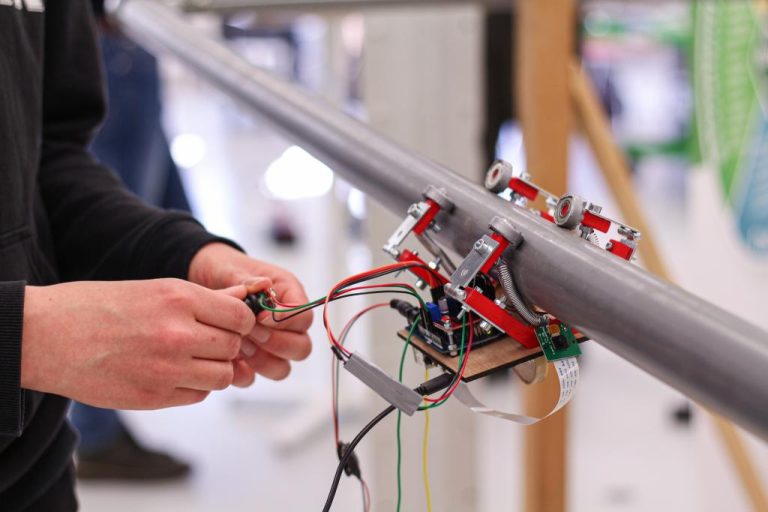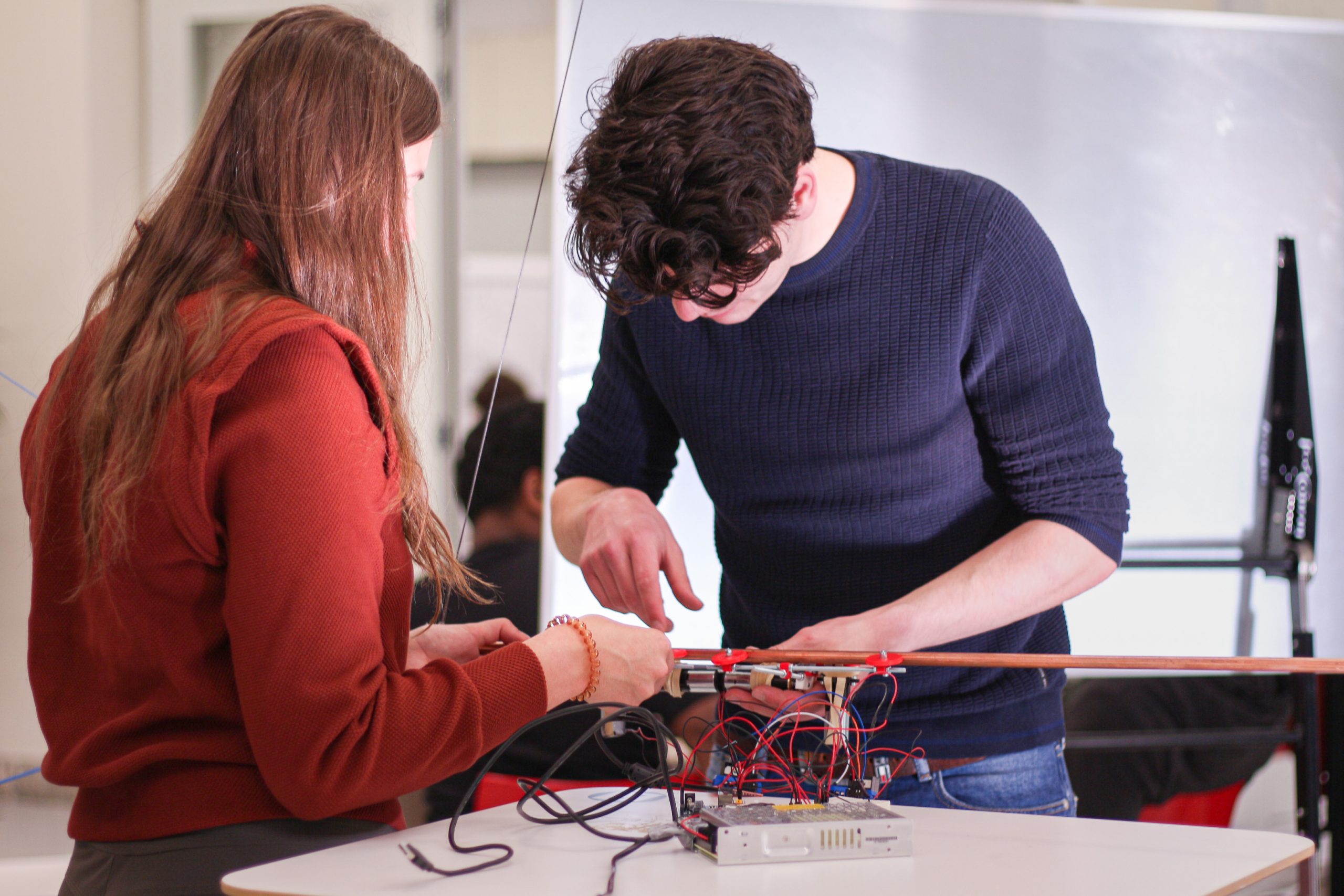Last Sunday morning, students put the finishing touches to their robot. They pulled an all-nighter for it at the Robotics Student Association hackathon.
Students put the finishing touch on their inspection robot for overhead lines. (Photo: Justyna Botor)
President Gijs Koning (25) of the robot club is still a bit groggy when Delta calls him on Monday morning. The Master’s student in Computer Science had a fantastic weekend with little sleep. Seventeen students had participated in the challenge that RSA and the robotics study society Asimov had organised. Five of the participants wrote software for 24 hours, the other 12 built a robot. Everyone was happy that after two years of Corona the event could finally take place again.
Robot builders could choose from two assignments, both of which called for an inspection robot. The company VolkerWessels asked for a robot that can inspect the overhead wires of trains to determine the degree of wear and tear. Chemical company Nobian was looking for a robot to inspect PVC pipes for damage, cracks or leaks.
Winners
What made Nobian’s task extra difficult was that the PVC pipes did not only run horizontally, but also vertically. Furthermore, right-angled bends proved to be difficult obstacles for robots moving along the pipe.
Nevertheless, team Centipipe was able to convince the jury of the value of their robot, especially because it was able to negotiate both upright and vertical pipes. Fast prototyping was beneficial, is Koning’s analysis. “By testing quickly with laser cutting and 3D printing, they were able to find flaws in their early designs and improve them.”
The simultaneous software challenge was won by team Artificial Incompetence. They managed to predict, from the data of pressure sensors in pipes, where a blockage would occur in a network, hours before it actually did. This assignment was also submitted by Nobian.
Clubhouse
The robotics and programming marathon marks the return of RSA as a venue for robotics students, King says. The association was founded in 2019, but was dormant for two years due to corona. Meanwhile, some 60 members have found their way back to the RSA clubhouse in the attic of the RoboHouse at Julianalaan 67A.
There they work in teams on robot projects for half a day a week on average. This is an accessible way to work with robots and easily combine it with your studies, explains Koning. He also points out the social activities such as drinks, bowling and lectures. RSA is open to all students who want to work on robots, says the Chairman. RSA’s activities complement those of study association Asimov for master’s students in robotics and vehicle engineering.

This robot glides along PVC pipes to inspect them. (Photo: Justyna Botor)
More information:
Do you have a question or comment about this article?
j.w.wassink@tudelft.nl


Comments are closed.